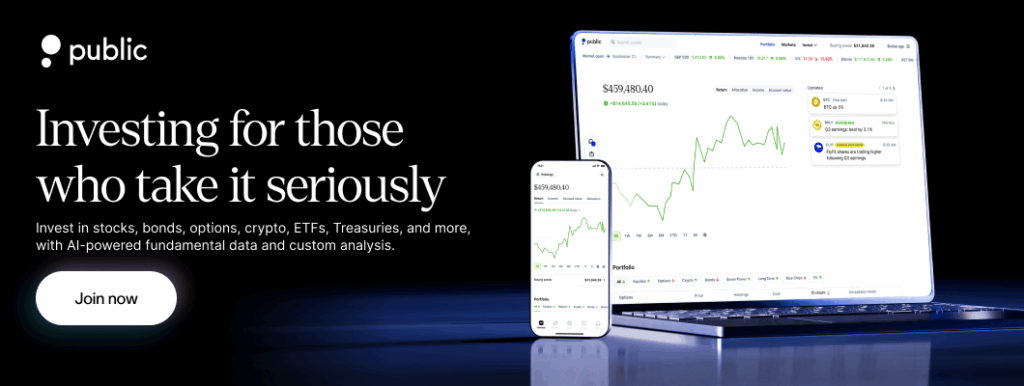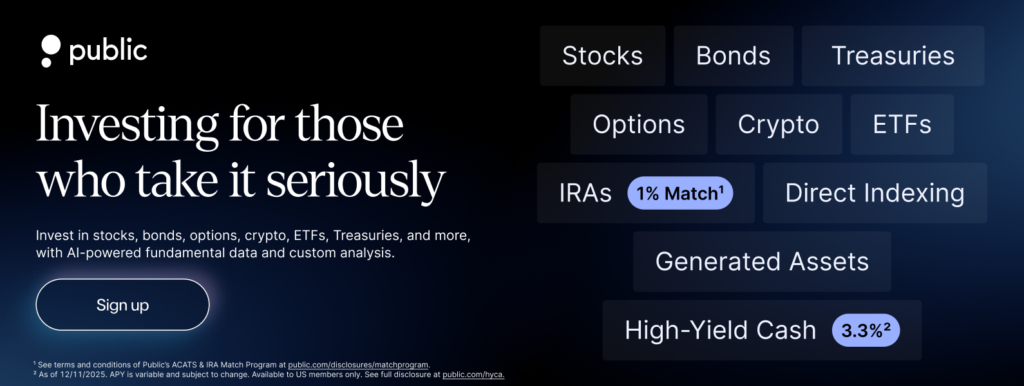Investing in the stock market can feel like riding a roller coaster—thrilling when the highs come, but nerve-wracking during the drops. For US investors, especially those new to investing, market volatility is often seen as a source of uncertainty and risk. But what if it could also be an opportunity?
In this blog, we’ll break down what market volatility really means, why it happens, and how you can develop strategies to invest confidently, even during turbulent times. Whether you’re building a long-term portfolio or looking to make the most of short-term fluctuations, understanding volatility is key to making informed decisions.
Let’s explore how you can turn market ups and downs into stepping stones toward your financial goals.
What is market volatility?
Market volatility describes the rate at which the price of an asset, index, or market moves. It can stem from various factors, such as economic data releases, geopolitical events, or investor sentiment. While high volatility can signal uncertainty, it also may create opportunities for investors willing to take calculated risks.
Volatility is often measured by the standard deviation of returns or indices like the CBOE Volatility Index (VIX), which tracks the implied volatility of S&P 500 options. A higher VIX level suggests increased uncertainty, while a lower level may indicate a calmer market.
What causes market volatility?
Market volatility can arise due to several factors, including:
1. Economic data releases
Reports on GDP, employment rates, and inflation can cause markets to react significantly, especially if the data deviates from expectations.
2. Corporate earnings reports
Individual stocks may experience sharp price movements around earnings announcements, which may lead to broader market fluctuations if the company is influential.
3. Geopolitical events
Political instability, conflicts, or trade tensions can increase uncertainty and market volatility.
4. Interest rate changes
Decisions by central banks, such as the Federal Reserve, to adjust interest rates may significantly impact investor sentiment and asset prices.
5. Investor sentiment
Emotional responses, such as fear or greed, may drive large buying or selling waves, amplifying price swings.
Market volatility index
The CBOE Volatility Index (VIX), often referred to as the “fear gauge,” measures the market’s expectation of 30-day volatility based on S&P 500 Index options. A rising VIX indicates that traders anticipate increased volatility in the S&P 500 Index, reflecting heightened market uncertainty. Conversely, a declining VIX suggests expectations of a calmer market.
As of January 30, 2025, the VIX closed at 15.84, down 0.72 points (4.35%) from the previous day. Earlier in the month, on January 10, the VIX spiked to 20.31, its highest level since December 20, 2024, following a robust jobs report that adjusted market expectations for Federal Reserve interest rate policies.
Historically, the VIX has exhibited an inverse relationship with the S&P 500 Index, often rising during market downturns and declining during market rallies. This inverse correlation makes the VIX a valuable tool for investors seeking to gauge market sentiment and potential future volatility.
Investors should note that while the VIX provides insights into market expectations, it is not directly investable. However, various financial instruments, such as VIX futures and options, allow investors to trade based on their volatility outlooks. These instruments can be complex and may not always track the VIX perfectly due to factors like the futures curve and contract roll yields.
In summary, the VIX serves as a crucial indicator for assessing market sentiment and anticipated volatility. Recent fluctuations underscore its sensitivity to economic data and policy expectations, highlighting its role in financial analysis and decision-making.
How to invest during market volatility?
Investing during periods of market volatility can be challenging, but adopting the right strategies may help you navigate the ups and downs. Here are some approaches that may guide your investments during volatile markets:
1. Stick to a long-term plan
- Volatile markets may tempt you to make impulsive decisions, but staying focused on your long-term goals can help you avoid unnecessary losses.
- Regularly review your investment plan to ensure it aligns with your objectives.
2. Diversify your portfolio
- Diversification can reduce risk by spreading investments across different asset classes, sectors, or regions.
- A well-diversified portfolio may cushion losses during market turbulence.
3. Use dollar-cost averaging (DCA)
- Investing a fixed amount regularly, regardless of market conditions, may lower the impact of market fluctuations.
- DCA can help you buy more shares when prices are low and fewer when prices are high.
4. Focus on quality investments
- Companies with strong fundamentals may withstand volatility better than speculative investments.
- Focus on businesses with robust cash flows, low debt, and consistent earnings.
5. Consider defensive sectors
- Sectors like utilities, healthcare, or consumer staples can perform relatively well during market downturns.
- Allocating some of your portfolio to these areas may provide stability.
6. Avoid timing the market
- Trying to predict market highs and lows may lead to missed opportunities or increased losses.
- Consistent investing can yield better results over time compared to market timing.
7. Reassess your risk tolerance
- Market volatility may highlight whether your portfolio matches your risk tolerance.
- Adjusting your asset allocation to align with your comfort level can help you stay invested.
8. Keep cash reserves
- Holding some cash may provide flexibility to take advantage of opportunities when prices dip.
- Cash reserves can also help you manage unexpected expenses without selling investments at a loss.
9. Avoid emotional decisions
- Volatility may cause fear or panic, but emotional decisions can hurt your returns.
- Stay disciplined and make decisions based on your strategy, not short-term market movements.
Bottom line
Market volatility is a natural part of investing, and while it can seem overwhelming, it also offers opportunities for growth when approached with the right mindset and tools. By understanding what drives volatility, using strategies like diversification and dollar-cost averaging, and staying disciplined, you can transform uncertainty into a pathway toward your financial goals.
With Public.com, you’re not just investing — you’re investing smarter. Access real-time market data, explore trends with AI-powered insights, and diversify effortlessly across stocks, ETFs, crypto, and more — all in one platform. Whether you’re a seasoned investor or just getting started, Public.com gives you the tools to navigate market volatility with confidence.
Sign up on Public.com today and start exploring opportunities to grow your financial knowledge and investments.
FAQs
What can cause market volatility?
Market volatility can be caused by economic events or changes to monetary policy. More recently, political events have also led to volatile markets.
Is market volatility a good thing?
Market volatility is a natural part of investing. In the stock market, maintaining and evaluating your investment strategy throughout these periods of volatility, or increasing your positions when the market is in a downturn, may lead to better long term returns.
How do you calculate market volatility?
Traders use a variety of strategies to calculate market volatility. To understand historical trends, they’ll usually measure the standard deviation of a stock from its average value. Future volatility is calculated using indexes like the VIX, which measures investor sentiment.
What is the difference between a bear market and a bull market?
Bear markets occur when a stock or index falls more than 20% from its recent high. Bull markets happen when a stock or index increases more than 20% from its recent low.
What is the difference between volatility and risk?
Volatility is a measurement of the change in an assets price over time. Volatile markets come with higher risk, or a higher possibility that an investment wont perform as expected.
What is a hedge against market volatility?
A hedge is an investment or strategy that guards against a certain market risk. Investors can hedge against market volatility by diversifying their portfolio or using a volatility index.
What is the relationship between market volatility and market performance?
Market volatility may have a lower impact on long-term portfolio performance. Volatility may increase or decrease market performance in the short term.
What might happen if the market volatility is high?
During periods of high market volatility, your investments may rapidly gain or lose value. It’s not uncommon for investors to feel anxious about their investment decisions during this period. Some experts suggest avoiding panic selling and holding out until the market calms down. As an investor, you should evaluate your personal financial situation to determine if this is the right strategy for you.


